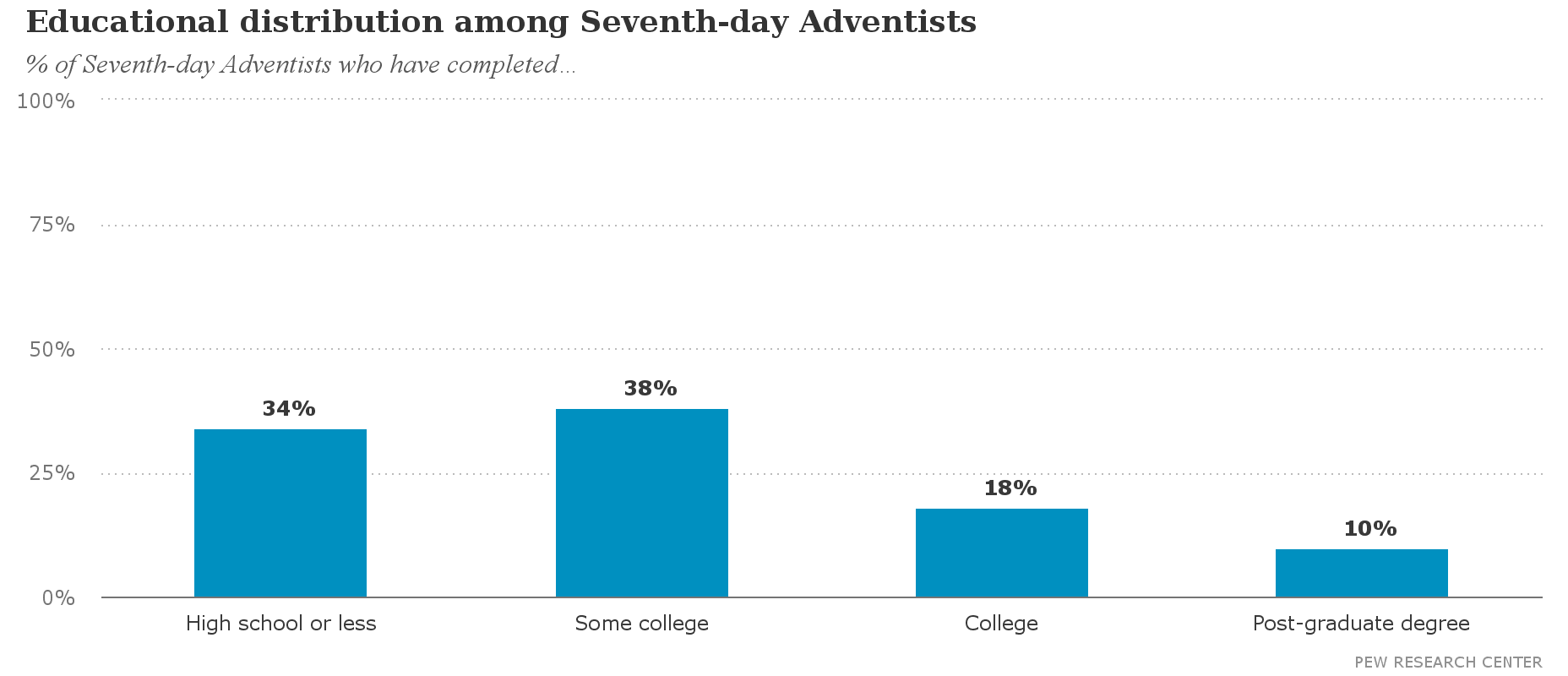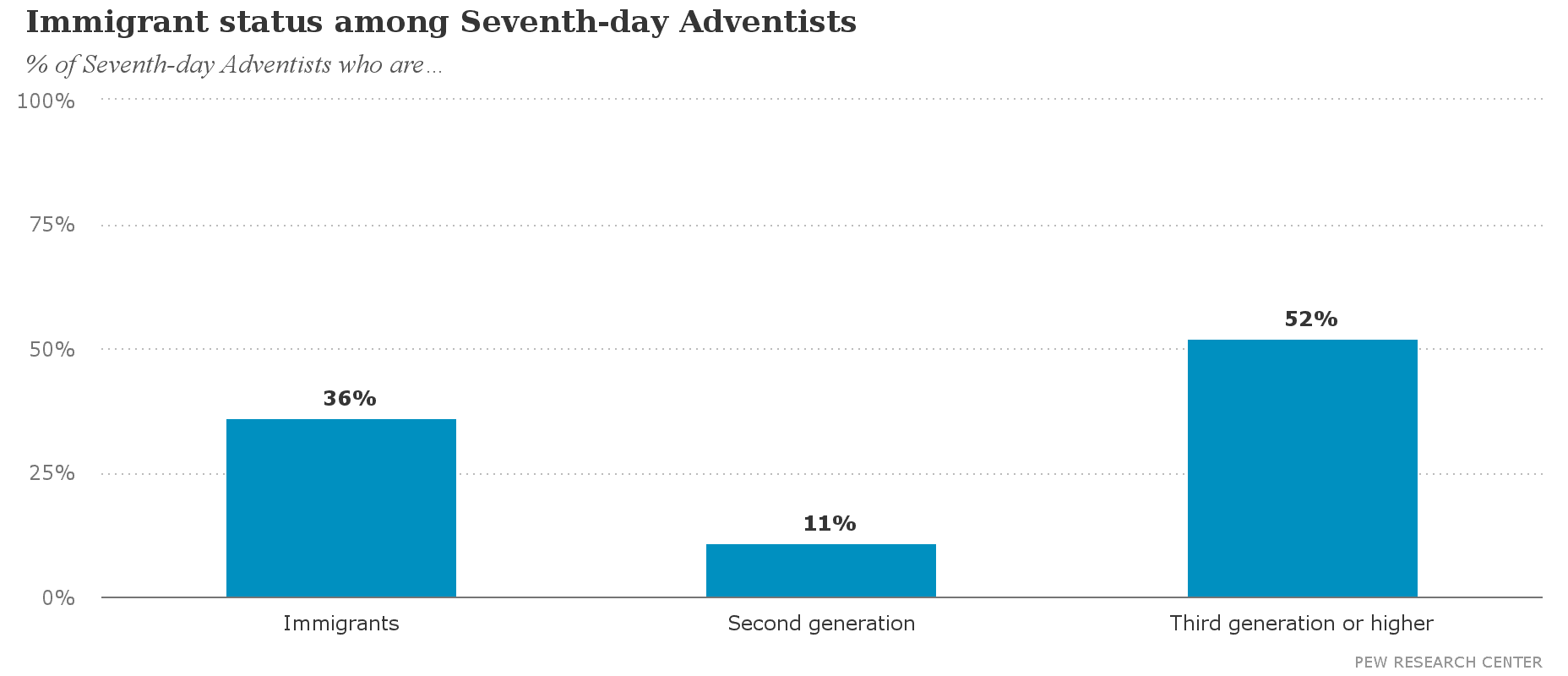
, news editor, Adventist Review
Pew Research Center, a respected Washington think tank, rolled out a new batch of data about Seventh-day Adventists in the United States this week in response to high public interest in the presidential campaign of Ben Carson, a retired Adventist neurosurgeon.
While some findings are eye-catching, the overall data should be viewed cautiously because Pew interviewed a miniscule number of Adventists for the survey and several results contradict information gathered by the church itself, said David Trim, director of the Adventist world church’s Office of Archives, Statistics, and Research.
“A key point to bear in mind with all of these findings is the small size of the Pew sample in contrast to the Adventist studies,” Trim told the Adventist Review.
Pew’s data is drawn from a comprehensive 2014 Religious Landscape Study of the United States based on interviews with more than 35,000 people, giving it a margin of error of only 0.6 percentage points. But the sample of Adventists in the study was only 165 people, moving the margin of error up to a significant 9.2 percentage points.
Read David Trim’s news commentary on the previous batch of Pew data released in November

The first problem with Pew’s data appears with the first chart on its website, “Age Distribution Among Seventh-day Adventists,” which says the largest group of Adventists (35 percent) is aged 30 to 49, Trim said.
“Pew’s sample is younger than the American Adventist reality,” he said.
In reality, actual demographic data gathered by the Adventist Church in North America through the eAdventist membership system shows that the largest group (30 percent) is aged 65 or over, Trim said. Pew put that age group at 20 percent, almost within its 9 percent margin of error.
Pew’s estimated that the second-largest group (28 percent) is aged 18 to 29, a figure that is more than double the church’s calculations, Trim said.

In a chart titled, “Educational Distribution Among Seventh-day Adventists,” Pew significantly understates the educational attainment of Adventists, Trim said. Pew reported that 34 percent of Adventists have high school as their highest attainment, but the church puts that figure at only 11 percent. While Pew says only 28 percent have graduated from college, the church’s figure is 70 percent.
Why might Pew be so far off from the church’s figures? Trim again highlighted the small sample and noted indications that it might have inadvertently been disproportionately drawn from just one region of the country, leading to local variations being reported as typical for the whole membership across North America.
“Certainly it seems their sample was skewed,” he said.
On gender, Pew has almost exactly the same figures as the church, reporting 46 percent male and 54 percent female vs. the church’s 47 percent male and 53 percent female.


Pew said 52 percent of Adventists have lived in the United States for three generations or more, 11 percent are second generation, and 36 percent are immigrants. It also said 37 percent of Adventists earn an annual income under $30,000; 24 percent earn $30,000 to $49,999; 24 percent earn $50,000 to $99,999; and 11 percent earn $100,000 or more.
The church has no data on immigration and income.
On church attendance, Pew reports 67 percent attend church weekly, but the church survey shows 79 percent. And since U.S. members were not afraid to report negative attitudes or practices differing from what church leaders would see as orthopraxis in some areas, Trim said he viewed that figure as fairly credible.
Pew reports “participation in prayer, scripture study or religious education groups among Seventh-day Adventists” as being at least once a week by half of Adventists. The church survey had a question that was different but comparable (about “participation in reading the Bible and the writings of Ellen G. White, engaging in personal devotions, and family worship”), which showed that 51 percent participated daily and 91 percent at least once a week.
“Among church leaders, we were disappointed at such a low daily participation rate, but if one looks at weekly rates, as this latest report from Pew does, then our data shows a much higher rate than in their survey,” Trim said.
Pew reports 72 percent reading the Bible at least once a week, but the church survey showed 90 percent reading the Bible at least once a week. “Our concern is that daily is only 51 percent, but still 90 percent is much more than their 72 percent even given their margin of error,” Trim said.